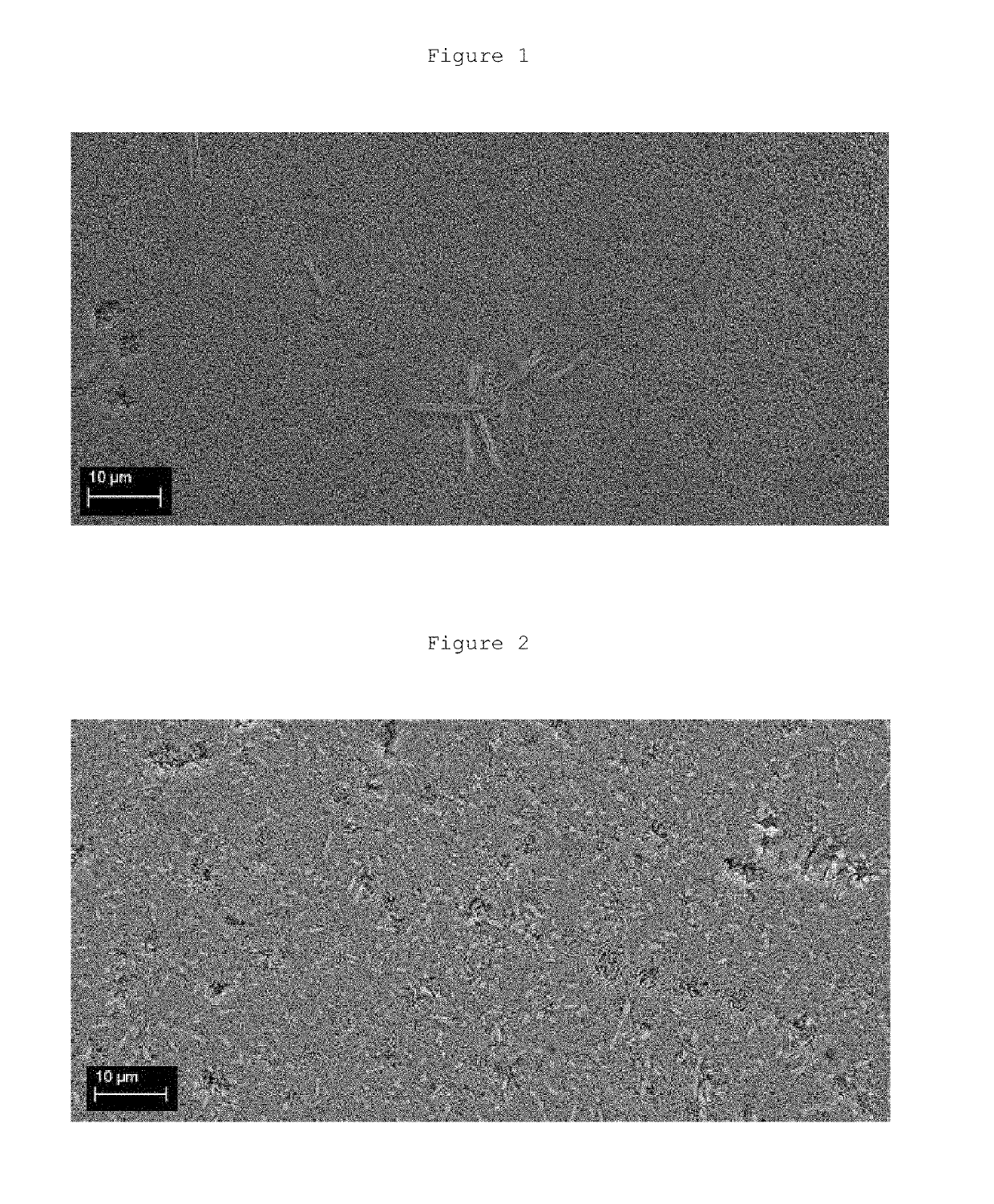Lithium silicate diopside glass ceramics
- Summary
- Abstract
- Description
- Claims
- Application Information
AI Technical Summary
Benefits of technology
Problems solved by technology
Method used
Image
Examples
examples 1 to 22
Crystal Phases
[0088]In total, 22 glasses and glass ceramics with the composition specified in Table I were prepared.
[0089]The following meanings apply in Table I:
[0090]
Tgglass transition temperature, determined by means ofDSCTS and tStemperature and time used for melting the startingglassTSinter and tSintertemperature and time used for the heat treatment andthus crystallization of compactsTPress and tPresstemperature and time used for pressing crystallizedcompactsL*a*b valuekey for characterizing the colourCR valuecontrast value of the glass ceramic according toBritish Standard BS 5612Li2Si2O5lithium disilicateLi2SiO3lithium metasilicateCaMgSi2O6diopsideSiO2quartz, in particular low quartz, or cristobaliteCs0.809AlSi5O12caesium alumosilicate
[0091]In Examples 1 to 22 glasses from usual raw materials were melted in a platinum crucible at the temperature TS for a period tS. Glass frits, i.e. glass granules, were prepared by pouring the melted starting glasses into water. For the furthe...
example 23
of Comminution
[0096]A glass frit with the composition according to Example 10 was ground with a ball mill in the same way as specified for Example 20 to an average particle size of 20 μm, relative to the number of particles. The ground glass powder was then pressed uniaxially and crystallized and sintered in a Programat-type furnace (Ivoclar Vivadent AG) at a temperature of 870° C. for a period of 5 min. A colour measurement (Minolta apparatus) and an X-ray diffraction analysis to determine the crystal phases were then carried out on the test piece prepared in this way. Li2Si2O5 formed the main crystal phase of the glass ceramic. Diopside and Li3PO4 were the secondary crystal phases. The diopside content was greater than in Example 10. The increased proportion of diopside leads to a higher degree of opacity which could be read from a CR value of 90.00 instead of 69.95.
example 24
ng
[0097]A glass with the composition according to Example 1 was melted in a platinum crucible at a temperature of 1500° C. and then poured into water. The glass frit prepared in this way was ground with a KM100 vibratory mill from Retsch GmbH, Haan, Germany, to an average particle size of <90 μm, relative to the number of particles. A powder green compact was prepared by uniaxial pressing from the glass powder obtained. The powder green compact was crystallized and densely sintered at a temperature of 800° C. and with a holding time of 5 min in a Programat-type furnace. The crystallized and densely sintered blank was then pressed by means of hot pressing with a holding time of 25 min at a temperature of 910° C. An X-ray structural analysis was carried out on the pressed test pieces and the coefficient of thermal expansion as well as the biaxial strength of the pressed material was determined according to ISO 6872. The biaxial strength was 230 MPa.
[0098]To test the machi...
PUM
| Property | Measurement | Unit |
|---|---|---|
| Temperature | aaaaa | aaaaa |
| Time | aaaaa | aaaaa |
| Angle | aaaaa | aaaaa |
Abstract
Description
Claims
Application Information
 Login to View More
Login to View More - R&D
- Intellectual Property
- Life Sciences
- Materials
- Tech Scout
- Unparalleled Data Quality
- Higher Quality Content
- 60% Fewer Hallucinations
Browse by: Latest US Patents, China's latest patents, Technical Efficacy Thesaurus, Application Domain, Technology Topic, Popular Technical Reports.
© 2025 PatSnap. All rights reserved.Legal|Privacy policy|Modern Slavery Act Transparency Statement|Sitemap|About US| Contact US: help@patsnap.com

